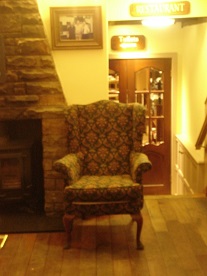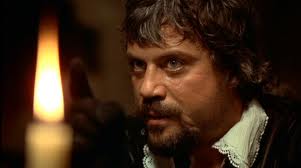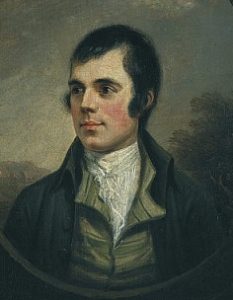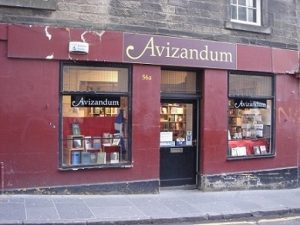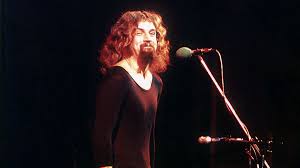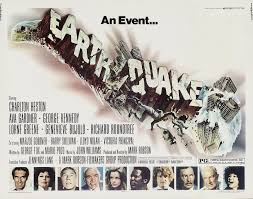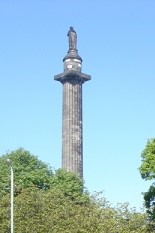
© Slainte Media / RT / From archive.org
On March 26th, six weeks before the elections for the Scottish Parliament, former Scottish First Minister and former Scottish National Party (SNP) leader Alex Salmond launched his new Alba party to contest those elections.
In response to the news, George Galloway – a man with a lengthy political CV himself, having been Labour MP for Glasgow Hillhead, Respect MP for Bethnal Green and Bow and Bradford West and leader of the Respect Party, and now leader of the Alliance for Unity party, which he launched last year in anticipation of the Scottish parliamentary elections too – tweeted: “So it’s me and Alex Salmond in the ring. Heavyweights. Him for separatism, me for the union. Seconds away…”
In the event, neither Salmond’s Alba nor Galloway’s Alliance for Unity got enough votes to send any of their representatives to the Scottish Parliament. The former amassed 44,913 votes and the latter managed 23,299 out of a total of 2,716,547 votes cast. So that tweet, as they say, aged well. Both heavyweights got their arses kicked.
I’m not shedding any tears over Galloway’s humiliation. He’s a politician whose couple of good deeds – his involvement with the Scotland United campaign for the creation of a devolved Scottish parliament in the early 1990s; squaring up to a US Senate committee investigating the Food for Oil programme in the aftermath of the disastrous invasion of Iraq in 2005 – have been obliterated in the public memory by the tsunami of crap things he’s done in his endless quest to promote himself. These include dishing religious-related dirt on his political opponents during his campaigns with the Respect Party; defending the execution of a gay man by the Iranian government whilst working for Press TV, funded by the same government, in 2008; climbing onto the Nigel Farage bandwagon by endorsing a vote for Brexit in 2016; hugging extreme right-wing strategist and evil incarnate Steve Bannon in 2019; and, let us never forget, pretending to be a cat slurping cream off Rula Lenska’s lap on the 2006 series of Celebrity Big Brother.
Meanwhile, lately, Galloway’s antics during his doomed campaign to get into the Scottish Parliament via the second-vote / proportional-representation ‘list’ system have included him urging voters to give their first vote to the Conservative Party (the former left-wing firebrand had declared a few years earlier, “If you ever see me standing under a Union Jack shoulder-to-shoulder with a Conservative, please shoot me”); causing a twitter pile-on, intentionally or unintentionally, against Scots-language poet Len Pennie; making unsavoury references to the ethnicity of Scottish Justice Secretary Humza Yousaf (“You are not a Celt like me”); making a hilarious video where he sucked up to the Scottish Gamekeepers Association and promised to end Green Party ‘tyranny over rural communities’ whilst resembling a cast member from Last of the Summer Wine (he obviously believed gamekeepers had short memories considering that in 2002, as an MP, he’d supported a hunting ban); and generally trying to reinvent himself as a true-blue, Union Jack-waving, Churchill-and-spitfires-obsessed slab of gammon.
Now that he’s torched every left-wing principle he once professed to have for the sake of self-promotion, it’d be nice to think that this beyond-disastrous election result will make Galloway slink off beneath a rock and never show his face again. But of course he won’t. He’ll be back. The creature knows no shame.
I’m not shedding tears for Alex Salmond either, but I’ll admit to feeling at least slightly conflicted. For the last 35 years, since the dark days when Margaret Thatcher ran Scotland with the imperious disregard one would give a colonial possession, Scottish politics have felt like a rollercoaster with both giddy peaks and despairing troughs. And Salmond has been a constant presence on that rollercoaster. I know plenty of people who loathe him but I’ve seen him as a force for both the good and the bad, the good earlier on and bad more recently. It’s the memory of the good things that gives me a twinge of sadness to see him end up like this, even if he brought most of it upon himself.

From en.wikipedia.org
I remember when I first saw him. One afternoon in early 1987, while a fourth-year undergraduate student, I was nursing a pint in the Central Refectory building at Aberdeen University. I noticed from the corner of my eye a group of students whom I knew as members of the campus branch of the SNP – Alan Kennedy, Val Bremner, Gillian Pollock, Nick Goode – enter and wander over to the counter. They were in the company of a young, round-faced bloke in an un-studenty suit, shirt and tie. I identified him as an up-and-coming SNP politician whom Alan Kennedy, a good mate of mine, had told me was standing in the next general election in nearby Banff and Buchan against the incumbent Conservative Party MP Albert McQuarrie. He’d come to the university that day to address the SNP group and this was the SNP students showing their visitor some post-talk hospitality. The politician, I’d been assured, was one to watch. Indeed, Alan said something along the lines of: “He’s going to do great things.”
A few months later, on June 11th, the general election took place and this rising SNP star wrestled Banff and Buchan away from Albert McQuarrie and became its new MP. I recall McQuarrie, a doughty old-school Scottish Tory MP who revelled in the nickname ‘the Buchan Bulldog’, bursting into tears during a subsequent interview at what he saw as the unfairness and indignity of losing his beloved constituency to an SNP whippersnapper. He was perhaps the first politician, but certainly not the last, to have his nose put out of joint by Alex Salmond.
By the early 1990s, Salmond was SNP leader. I lived in London at the time and occasionally I’d drink with a Labour Party spin doctor, also from Scotland. He had no inhibitions about telling me, at every opportunity, what a detestable creep he thought Salmond was. With his appropriately smart-Alec manner and habitual smirk, which frequently expanded into a Cheshire-cat grin, and a general arrogance that no doubt came from knowing he was intellectually streets ahead of the numpties making up the majority of Westminster’s Scottish Labour MPs, you could understand how much of an annoyance Salmond was to his opponents. But back then the SNP had just three MPs, so at least he could be dismissed as a minor annoyance.
How long ago that seems now. In those far-off days, the Labour Party controlled much of Scotland at council level, provided the lion’s share of Scottish MPs for Westminster and, when it arrived in 1999, dominated the Scottish parliament too. If their party also happened to be in power at Westminster, which it was occasionally, Scottish Labour-ites surely felt like masters of all they surveyed. If the Conservatives were in power at Westminster, which they were most of the time, those Scottish Labour-ites grumbled a bit, but diplomatically kept their heads down while right-wing Tory policies were imposed on Scotland.
Then in 2007 the sky fell in. Salmond’s SNP won the biggest number of seats in the Scottish parliament and he became Scotland’s First Minister. The SNP have remained in power there during the 14 years and three Scottish parliamentary elections since. They also won the majority of Scotland’s Westminster seats in the UK general elections in 2015, 2017 and 2019. They lost the independence referendum in 2014 – an event that led to Salmond resigning as First Minister and making way for his deputy and supposed protégé Nicola Sturgeon – but the percentage of the vote they got, 45%, was still far more than what anyone had expected at the campaign’s start. They upended the cosy old tradition of Scottish deference to the London-based overlords. Thank God for that, in my opinion.

© William Collins
This stuck in many craws. Not just in those of the Scottish Labour Party, with its historical sense of entitlement, but in those of the majority of Scotland’s newspapers, whose hacks had enjoyed a close relationship with the old political clique and liked to see themselves as part of Scotland’s establishment. It must have horrified them to discover that, no matter how negatively they reported the SNP and its performance in government, a significant proportion of the Scottish public ignored them and kept on voting SNP. Meanwhile, the grin of Alex Salmond, the bastard who seemed emblematic of their good times coming to an end, grew ever wider, his mood grew ever merrier and his girth grew ever more Falstaffian.
However, from 2017 onwards, Salmond’s many foes scented blood. 2017 saw him lose the Westminster seat that, after quitting as Scottish First Minister, he’d been elected to in 2015. That same year, he put on at the Edinburgh Festival a chat-show called Alex Salmond: Unleashed, which from all accounts was a graceless, self-indulgent and ego-driven mess. Soon after, he developed his stage-show into a programme called The Alex Salmond Show, which was broadcast on RT, Russia’s international English-language news channel. Associating himself with Vladimir Putin’s televisual voice to the world was not a wise move. Salmond hadn’t just given his detractors ammunition to use against him. He’d handed them a whole arsenal.
I’d always assumed there was no dirt to dig up on Salmond, for the simple reason that if there had been, his enemies in the old Scottish establishment would have dug it up and used it to wreck his reputation long ago. Thus, it was a surprise in 2018 when the Daily Record newspaper reported that Salmond faced allegations of sexual misconduct while he’d been First Minister. This had lately been the subject of an inquiry by the Scottish government and its findings had been passed on to the police. Although Salmond made sure there was a legal review of this, which resulted in the Scottish government admitting that its investigative procedures had been flawed and paying him half a million pounds in legal expenses, the police still charged him with 14 offences, including two counts of attempted rape, in 2019.
One year later, Salmond was cleared of these charges. The prosecutors dropped one charge, the jury found him not guilty of 12 more and the final charge was deemed ‘not proven’. Nonetheless, Salmond’s defence admitted he’d acted inappropriately, had been overly ‘touchy feely’ with female staff and ‘could certainly have been a better man’.
Meanwhile, the Scottish government and First Minister Nicola Sturgeon, now totally at odds with Salmond, were subject to both an investigation by a Scottish Parliamentary committee and an independent investigation by Irish lawyer James Hamilton about how they’d handled, or mishandled, the affair. The committee concluded there’d been both individual and corporate incompetence but these conclusions weren’t enough to topple Sturgeon. Hamilton judged that Sturgeon hadn’t breached the ministerial code, something that Salmond and his supporters, convinced of a conspiracy against him in high places, maintained she had.

From facebook.com
Salmond claimed his new Alba Party, supposedly more gung-ho in its desire for Scottish independence than the cautious SNP, was not another attempt to undermine Sturgeon. But it was generally perceived as an effort to diminish her party’s vote in the May 6th Scottish election – Salmond’s revenge as a dish served cold, a year after his acquittal. Whether Alba’s purpose was malevolent or benevolent, it didn’t succeed. The SNP ended up with 64 seats in the new parliament, with the Greens bumping up the number of pro-independence MSPs to 72, compared with the Unionist parties’ tally of 57 MSPs and Alba’s tally of zero.
It didn’t help Alba’s cause that it attracted a lot of fringe-dwelling dingbats in the independence movement, dingbats whom I’m sure Sturgeon’s SNP will be glad to see the back of. These included one vocal faction who seemed to spend all their time baiting and frothing against trans people. It also didn’t help that Salmond showed little contrition for his past misbehaviour. Fair enough, that misbehaviour hadn’t been enough to warrant a court conviction and prison sentence. But it did make him come across as a sleazebag whom no young woman would want to be around.
One thing I will say in Salmond’s defence. While I find claims of a conspiracy against Salmond in the upper echelons of the Scottish government, legal system and police force fanciful – conspiracies imply objectives, strategies and clear thinking, and to me the messiness of Salmond’s investigation and trial simply suggests witless blundering – I agree with his supporters that the Scottish press was pretty disgraceful in how it reported the case. From columnist Alex Massie trumpeting at the investigation’s outset that ‘whatever happens, it’s over for Salmond’, to the Herald previewing the trial with a ‘Big Read’ feature that it illustrated with pictures of the Yorkshire Ripper, Fred and Rosemary West, the Moors Murderers, Dennis Nilsen, Charles Manson and Adolf Eichmann, to a dodgy, nod-and-a-wink post-trial documentary by the BBC’s Kirsty Wark, the tone of the coverage didn’t suggest that a person is ‘innocent until proven guilty’. Rather, it suggested that a person is ‘guilty because we want them to be guilty’.
But that’s the only thing I’ll say in his defence.
Meanwhile, post-election, Salmond has announced his intention to become an influential Twitter presence, just as a certain former US president once was. “I am going to unleash myself on Twitter,” he said the other day, “now that Donald Trump has created a vacuum for me.” No, Alex, don’t. Just don’t. Call it a day for Christ’s sake.
It isn’t so much that the Salmond Rollercoaster has reached the bottom of the deepest dip yet. It’s more that the Salmond Rollercoaster has run out of track.

From the Jersey Evening Post

